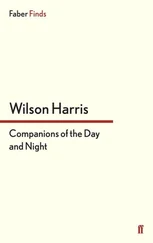A Companion to Motion Pictures and Public Value
Здесь есть возможность читать онлайн «A Companion to Motion Pictures and Public Value» — ознакомительный отрывок электронной книги совершенно бесплатно, а после прочтения отрывка купить полную версию. В некоторых случаях можно слушать аудио, скачать через торрент в формате fb2 и присутствует краткое содержание. Жанр: unrecognised, на английском языке. Описание произведения, (предисловие) а так же отзывы посетителей доступны на портале библиотеки ЛибКат.
- Название:A Companion to Motion Pictures and Public Value
- Автор:
- Жанр:
- Год:неизвестен
- ISBN:нет данных
- Рейтинг книги:3 / 5. Голосов: 1
-
Избранное:Добавить в избранное
- Отзывы:
-
Ваша оценка:
- 60
- 1
- 2
- 3
- 4
- 5
A Companion to Motion Pictures and Public Value: краткое содержание, описание и аннотация
Предлагаем к чтению аннотацию, описание, краткое содержание или предисловие (зависит от того, что написал сам автор книги «A Companion to Motion Pictures and Public Value»). Если вы не нашли необходимую информацию о книге — напишите в комментариях, мы постараемся отыскать её.
A Companion to Motion Pictures and Public Value
Companion
A Companion to Motion Pictures and Public Value
A Companion to Motion Pictures and Public Value — читать онлайн ознакомительный отрывок
Ниже представлен текст книги, разбитый по страницам. Система сохранения места последней прочитанной страницы, позволяет с удобством читать онлайн бесплатно книгу «A Companion to Motion Pictures and Public Value», без необходимости каждый раз заново искать на чём Вы остановились. Поставьте закладку, и сможете в любой момент перейти на страницу, на которой закончили чтение.
Интервал:
Закладка:
My proposed manner of responding to that question begins with C.I. Lewis’s observation that the term “aesthetic” should be used to identify something that most, if not all, people have good reason to care about, or in his words, “common human interests” (Lewis 1946, 373). Lewis thought it was in our common interest to be aware of those things in life that are genuinely worth pursuing, especially because “at least half of our avoidable troubles are created by those who do not know what they want and pursue what would not satisfy them if they had it” (Lewis 1946, 373). Lewis thought that a sound understanding of specifically aesthetic aims could be useful in this regard.
Lewis’ leading idea was that aesthetic value is a species of inherent value . That was the term he used to refer to an object’s capacity to occasion an intrinsically valued experience through the presentation of that object’s qualities in experience. In Lewis’s view, every experience has a positive or negative valence or felt quality, which is a mode of presentation as opposed to a second-order attitude about the intrinsic merit or demerits of the experience and its contents. In other words, someone’s experience of something could carry a positive or negative immediate valence for that person in the absence of an occurrent belief having the content: this is an intrinsically valuable experience . Moreover, Lewis did not equate aesthetic value with a purely hedonic reward, or pleasure; he states that an experience’s positive valence can be a matter of the pleasure one feels in having this experience, or it can derive instead from “the sense of integrity in firmly fronting ‘the unpleasant’” (Lewis 1946, 405).
Lewis’s use of the term “inherent” is somewhat misleading. He did not mean to say that the capacity or power referred to as “inherent” value had to be based uniquely on the intrinsic properties of the object. The realization of something’s “inherent” value, as he defines it, depends on the actual responses of observers, so its basis is necessarily response-dependent and experiential. If some X has the power of occasioning valued experiences of some type Y in observers of type O under circumstances C, clearly it is not only the intrinsic properties of X that make a difference to the possible or actual activation of that power or “inherent” value. The observers must be capable of attending and responding to the object in an appropriate way, and their actually doing so depends on their capacities, actions, and circumstances, as well as on the dispositions of the observed object, the qualities of which must be presented in the observer’s experience.
The basic Lewisian idea about aesthetic value can be pitched as follows: if in watching a film you greatly prize the experience, not only for some anticipated payoffs the experience may give you, but for the intrinsic value of that experience, then it follows that the film has an instrumental value for you, because your uptake of its qualities made your intrinsically worthwhile experience possible. If you have the right reasons to think the features of the film make it a reliable source of such valued experiences, then you could, using Lewis’s idiom, correctly attribute to that cinematic work’s inherent value, understood as the film’s capacity, under the right circumstances, to occasion an experience worth having for its own sake. Lewis seems to have held that some experiences are in themselves “final” values or are valued non-instrumentally. (One might disagree with this Lewisian assumption, yet hold that aesthetic experiences have instrumental value in contributing to human well-being or flourishing, which is itself a or even “the” final value. I shall not pursue this topic in what follows, and will instead work with Lewis’ assumption.)
Lewis allowed that in a very broad sense of “aesthetic,” all inherent value is aesthetic value. Yet he added that there was a more narrow sense of “aesthetic” that is worth identifying, and that in this more narrow sense of “aesthetic,” not all inherent value is aesthetic value. Lewis proposed various other additional conditions in order to distinguish between aesthetic and non-aesthetic inherent values. What follows is a revised, neo-Lewisian proposal based on only some of Lewis’s additional conditions (for more on this topic, see Livingston 2004, 2006).
Like many philosophers before and after him, Lewis thought it appropriate to restrict the scope of aesthetic value and experience to only excellent and positive instances. This aspect of Lewis’s explication of “aesthetic value” is, however, inconsistent with the thesis that aesthetic appreciation should explore both the aesthetic demerits as well as the aesthetic merits of its objects (Korsmeyer 2001). The latter thesis is, I think, correct. One reason that supports that thesis is that the vocabulary of aesthetic discrimination and appreciation is replete with negative terms that are standardly used to identify the negatively valenced qualities of the contents of aesthetic experiences. For example, a film can rightly be characterised as ponderous, irritating, tedious, loud, disgusting, ugly, jumbled, dull, incoherent, etc. These and similar terms pick out qualities correlated with a negative valence of the experience (where the term “valence” covers both the plus and minus, that is, both intrinsic value and “disvalue”). So, we set aside Lewis’s honorific condition on the sense of “aesthetic value.”
Another kind of condition proposed by Lewis (and others), does, however, merit retention because it appropriately sharpens the conception of aesthetic value and experience. I have in mind one of what Lewis calls his “moralistic” considerations. Suppose someone has just purchased an expensive item and finds it intrinsically gratifying to muse over the fact that this object is henceforth that person’s exclusive property. Ownership, then, could be plausibly construed as having inherent value. It is widely agreed, however, that we do not want our explication of “aesthetic value” to include the value of this sort of exclusive, possessive experience; the ownership relation may have inherent value in Lewis’s sense, but it has no aesthetic value.
Another condition pertains to the distinction between moral and aesthetic values. Suppose someone performs a courageous and genuinely altruistic action having great moral merit. That action has Lewisian inherent value because it can appropriately occasion admiration in observers. Well-founded admiration of moral behaviour has non-instrumental value—it can be good for its own sake. Yet it does not follow that such a state of admiration is an aesthetic experience. An analogous claim would hold for responses having a negative moral valence. So, again, not all inherent value is aesthetic.
With these considerations in mind, a neo-Lewisian proposal singles out the aesthetic instances of inherent value as follows:
Aesthetic inherent value/disvalue = (def) an object’s power to occasion intrinsically valenced experience, where this experience is not based on a moral or possessive attitude.
The term “object” is used here in a broad philosophical sense to refer to the content of the experience, or what it is an experience of. In this context, this would be a determinate valenced quality. If the object is complex, it is possible (and most likely) that only some of its qualities would be intrinsically valenced, which means valuable for its own sake and not exclusively as a means to some other end.
In assessing this proposal, it is important to grasp the significance of the final clause in the last phrase. One of the biggest errors in the history of aesthetics was the tendency to impose an overly strong notion of disinterestedness on the conception of aesthetic value, experience, and judgement, the thrust of which was to rule that “the aesthetic” is strictly incompatible with any sort of practical interest in the object (Rind 2002). The account proposed here is, on the contrary, compatible with one’s having a variety of interests in a complex object, beginning with an interest in the intrinsically valuable experiences that the object can occasion for different reasons. Moreover, the fact that some object has aesthetic inherent value does not entail that it cannot also have other sorts of value, such as moral value; the point, rather, is that the object’s aesthetic inherent value is not based on (or reducible to) those other values; it is, instead, a conceptually distinct kind of value.
Читать дальшеИнтервал:
Закладка:
Похожие книги на «A Companion to Motion Pictures and Public Value»
Представляем Вашему вниманию похожие книги на «A Companion to Motion Pictures and Public Value» списком для выбора. Мы отобрали схожую по названию и смыслу литературу в надежде предоставить читателям больше вариантов отыскать новые, интересные, ещё непрочитанные произведения.
Обсуждение, отзывы о книге «A Companion to Motion Pictures and Public Value» и просто собственные мнения читателей. Оставьте ваши комментарии, напишите, что Вы думаете о произведении, его смысле или главных героях. Укажите что конкретно понравилось, а что нет, и почему Вы так считаете.












